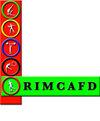DIFERENCIAS ENTRE LA PSICOMOTRICIDAD DINÁMICA Y NORMATIVA EN EL DESARROLLO INFANTIL
IF 0.7
4区 医学
Q4 SPORT SCIENCES
Revista Internacional De Medicina Y Ciencias De La Actividad Fisica Y Del Deporte
Pub Date : 2021-03-22
DOI:10.15366/RIMCAFD2021.81.004
引用次数: 3
Abstract
Psychomotricity in school contexts can be applied according to two currents: normative psychomotricity and dynamic psychomotricity. Although there has been research into the benefits of each one of these psychomotricity currents separately, there are no studies that compares the two types with one another . The aim of the present study was to establish if there were any significant differences between the two currents of psychomotricity at the level of general and psychomotor development in children at preschool age. At the same time, the study aimed to determine any emotional differences among 5-year-old children. Seventy-five pre-school children (aged between 3 and 5 years) were evaluated through standardised tests in two public schools, where 50.7% of the sample were girls. The results indicated that, in general, psychomotor development was significantly better in the group that had followed the dynamic Rev.int.med.cienc.act.fís.deporte vol. 21 número 81 ISSN: 1577-0354 48 methodology than in the group that had been taught using the normative methodology.儿童发展中动态和规范精神运动的差异
学校情境中的心理共情可分为规范性心理共情和动态性心理共情两种。虽然已经有研究分别研究了每种精神运动性电流的好处,但还没有研究将这两种类型进行比较。本研究的目的是确定两种精神运动性潮流在学龄前儿童一般和精神运动性发展水平上是否存在显著差异。与此同时,该研究旨在确定5岁儿童之间的情绪差异。通过标准化测试对两所公立学校的75名学龄前儿童(3至5岁)进行了评估,其中50.7%的样本是女孩。结果表明,总体而言,遵循动态Rev.int.med.cienc.act.fís.deporte vol. 21 número 81 ISSN: 1577-0354 48方法的小组的精神运动发展明显好于使用规范方法的小组。
本文章由计算机程序翻译,如有差异,请以英文原文为准。
求助全文
约1分钟内获得全文
求助全文
来源期刊
CiteScore
1.00
自引率
15.40%
发文量
49
审稿时长
>12 weeks
期刊介绍:
La Revista Internacional de Medicina y Ciencias de la Actividad Física y del Deporte (Rev.int.med.cienc.act.fis.deporte) es una revista multidisciplinar, científico-técnica, en torno a las Ciencias de la Actividad Física y del Deporte, que abarca temas tales como: actividades acuáticas, antropomotricidad, desarrollo y aprendizaje motor, arquitectura y equipamiento deportivo, bellas artes y deporte, biofísica, física y biomecánica del deporte, economía y deporte, bioquímica del deporte, biomatemáticas y estadística del deporte, comunicación y deporte, técnica y táctica deportiva, derecho deportivo, documentación deportiva, Educación Física y ciencias de la educación, educación física especial y deporte adaptado, expresión corporal, epistemología, ética y filosofía del deporte, medicina y salud de la actividad física, fisiología del ejercicio, sociología del deporte, psicología del deporte, motricidad humana, psicomotricidad, geografía y deporte, geología y deporte, gestión deportiva, historia de la educación física y del deporte, juegos motores, kineantropometría, literatura y lingüística del deporte, meteorología y deporte, ocio y recreación, olimpismo o tecnología del deporte. Todos los temas son publicables siempre que estén relacionados con la actividad física y el deporte y sea explícita esta relación en el artículo.

 求助内容:
求助内容: 应助结果提醒方式:
应助结果提醒方式:


